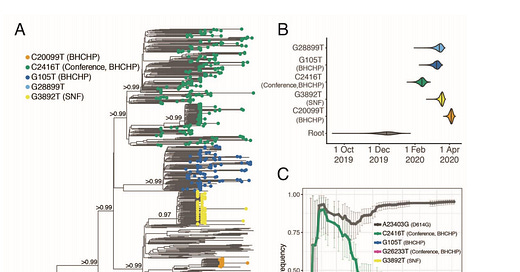12/14—UK reduces self-isolation period from 14 to 10 days
UK Chief Medical Officers' statement on the self-isolation period
[UK gov press release.] After reviewing the evidence, we are now confident that we can reduce the number of days that contacts self-isolate from 14 days to 10 days. People who return from countries which are not on the travel corridor list should also self-isolate for 10 days instead of 14 days. People who test positive should continue to self-isolate for 10 days from onset of symptoms or 10 days from point of taking a positive test if asymptomatic.
Housing, household transmission and ethnicity, 26 November 2020
[Via Public Health England.] 5 recent national studies have examined the relationship between Covid-19, ethnicity, and household characteristics. All find that household composition (i.e. number of people in the household and their ages) are key factors in terms of risk of Covid-19 infection and mortality, even when controlling for deprivation and other factors. There is increased risk of infection and mortality for those living in larger occupancy households.
Oxford–AstraZeneca COVID-19 vaccine efficacy
This is the first report of efficacy against COVID-19 for a non-profit vaccine aiming for global supply, equity, and commitment to low-income and middle-income countries. […] The limitations include that less than 4% of participants were older than 70 years of age, no participants older than 55 years of age received the mixed-dose regimen, and those with comorbidities were a minority, with results for that subgroup not yet available.
Male sex identified by global COVID-19 meta-analysis as a risk factor for death and ITU admission
We present a meta-analysis of 3,111,714 reported global cases to demonstrate that, whilst there is no difference in the proportion of males and females with confirmed COVID-19, male patients have almost three times the odds of requiring intensive treatment unit (ITU) admission (OR = 2.84; 95% CI = 2.06, 3.92) and higher odds of death (OR = 1.39; 95% CI = 1.31, 1.47) compared to females.
Phylogenetic analysis of SARS-CoV-2 in Boston highlights the impact of superspreading events
Analysis of 772 complete SARS-CoV-2 genomes from early in the Boston area epidemic revealed numerous introductions of the virus, a small number of which led to most cases. The data revealed two superspreading events. One, in a skilled nursing facility, led to rapid transmission and significant mortality in this vulnerable population but little broader spread. The second, at an international business conference, produced sustained community transmission and was exported, resulting in extensive regional, national, and international spread.
Missed an update? View past issues.


